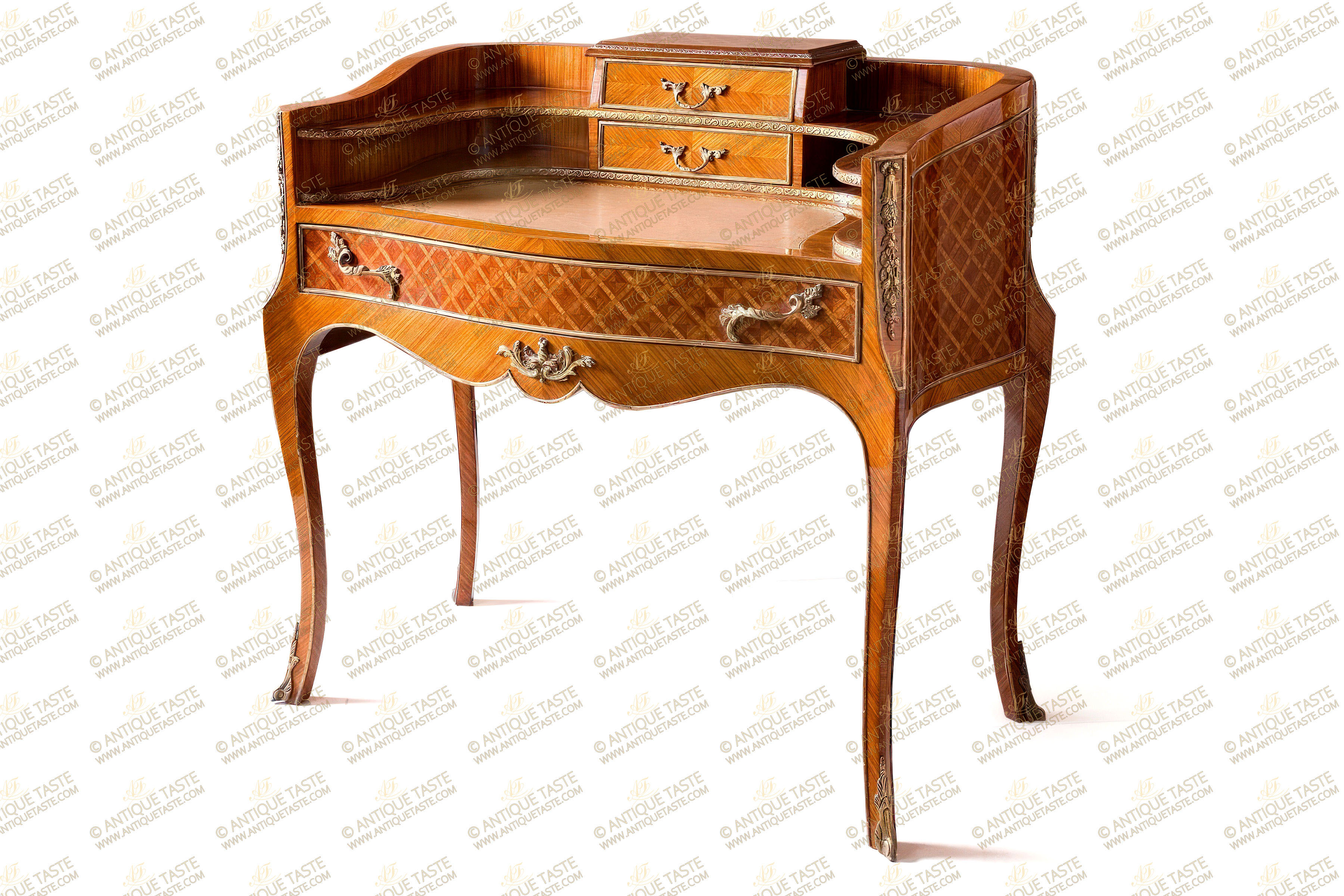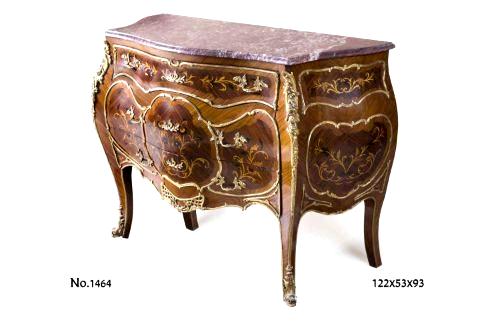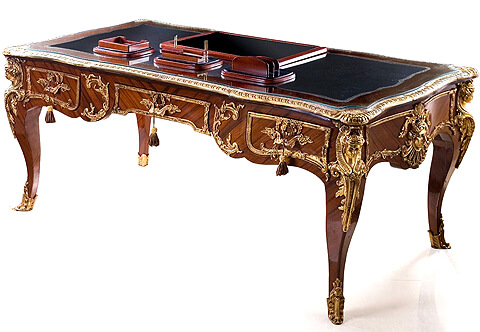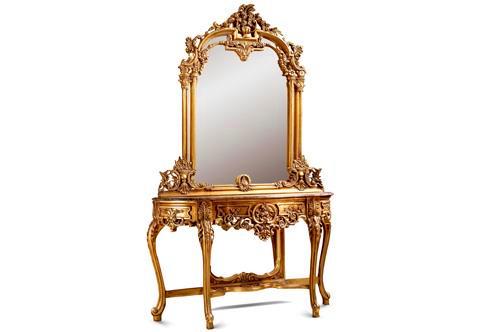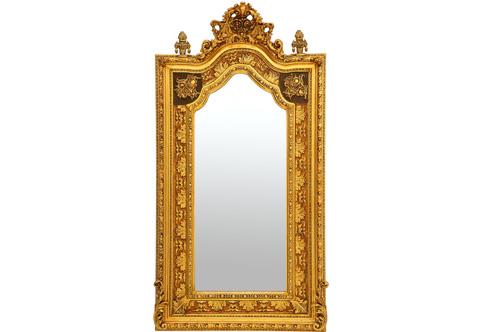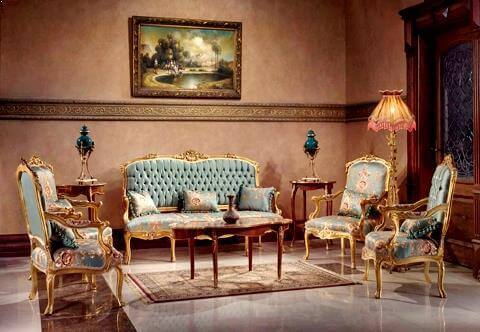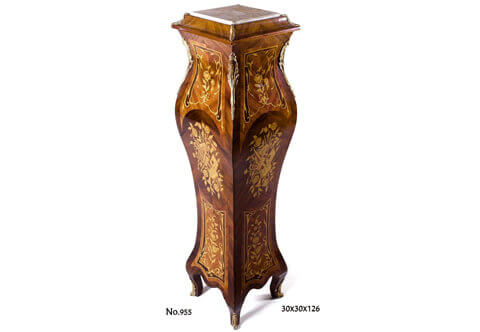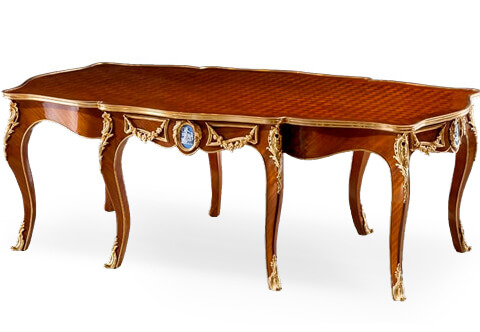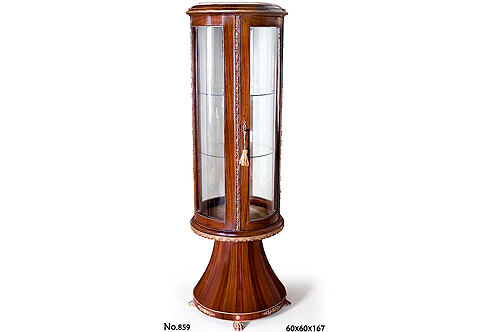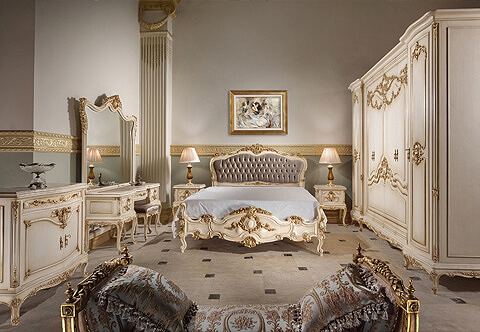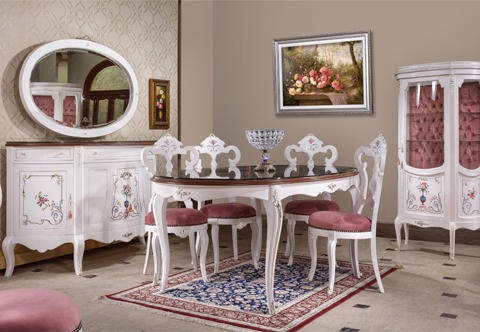French Napoleon III Transitional style ormolu-mounted Trellis Parquetry inlaid Bonheur Du Jour Bureau De Dame | Ladies Secretary writing Desk
Ref#D-1431 | Description
An aesthetic and most delicate French Napoleon III Transitional style ormolu-mounted trellis parquetry and sans-traverse veneer inlaid Bonheur Du Jour Bureau De Dame | Ladies Secretary Desk;
The curve-shaped two shelves back ornamented with a hammered ormolu band centered with two small drawers decorated with a gilt-ormolu strip to the front and drape ormolu band the back, upholstered inside in dark red velvet fabric, surmounted with a beveled top inlaid with an ormolu strip;
Above is an inset gilt-tooled leather writing surface above a scalloped shaped frieze with a central foliate ormolu mount and housing a wide drawer, upholstered inside in dark red velvet fabric and decorated with two ormolu foliate handles and framed with an ormolu band;
The sides, the back and the central wide drawer are inlaid in parquetry style within an ormolu strip. The lower contour of the bureau is bordered with an ormolu filet;
The concave-shaped corners with foliage ormolu mounts within an ormolu band, raised on slender splayed cabriole legs terminated with foliate scrolled ormolu sabots.
D-1431
H:98 x W:103 x D:60cm
Napoleon III Transitional style
The Napoleon III style | The Second Empire Style
The Napoleon III style, also known as the Second Empire style , is a highly eclectic style of architecture and decorative arts, which uses elements of many different historical styles, and also made innovative use of modern materials, such as iron frameworks and glass skylights. It flourished during the reign of Emperor Napoleon III in France (1852–1871) and had an important influence on architecture and decoration in the rest of Europe and North America. Major examples of the style include the Opéra Garnier (1862–1871) in Paris by Charles Garnier, the Bibliothèque nationale de France, the Church of Saint Augustine (1860–1871), and the Philadelphia City Hall (1871–1901). The architectural style was closely connected with Haussmann's renovation of Paris carried out during the Second Empire; the new buildings, such as the Opéra, were intended as the focal points of the new boulevards.
Comfort was the first priority of Second Empire furniture. Chairs were elaborately upholstered with fringes, tassels, and expensive fabrics. Tapestry work on furniture was very much in style. The structure of chairs and sofas was usually entirely hidden by the upholstery or ornamented with copper, shell, or other decorative elements. Novel and exotic new materials, such as bamboo, papier-mâché, and rattan, were used for the first time in European furniture, along with polychrome wood, and wood painted with black lacquer. The upholstered pouffe, or footstool, appeared, along with the angle sofa and unusual chairs for intimate conversations between two persons (Le confident) or three people (Le indiscret). The crapaud (or toad) armchair was low, with a thickly padded back and arms, and a fringe that hid the legs of the chair.
The French Renaissance and the Henry II style were popular influences on chests and cabinets, buffets and credences, which were massive and built like small cathedrals, decorated with columns, frontons, cartouches, mascarons, and carved angels and chimeras. They were usually constructed of walnut or oak, or sometimes of poirier stained to resemble ebony. Another popular influence was the Louis XVI style, or French neoclassicism, which was preferred by the Empress Eugénie. Her rooms at the Tuileries Palace and other Places were decorated in this style.

